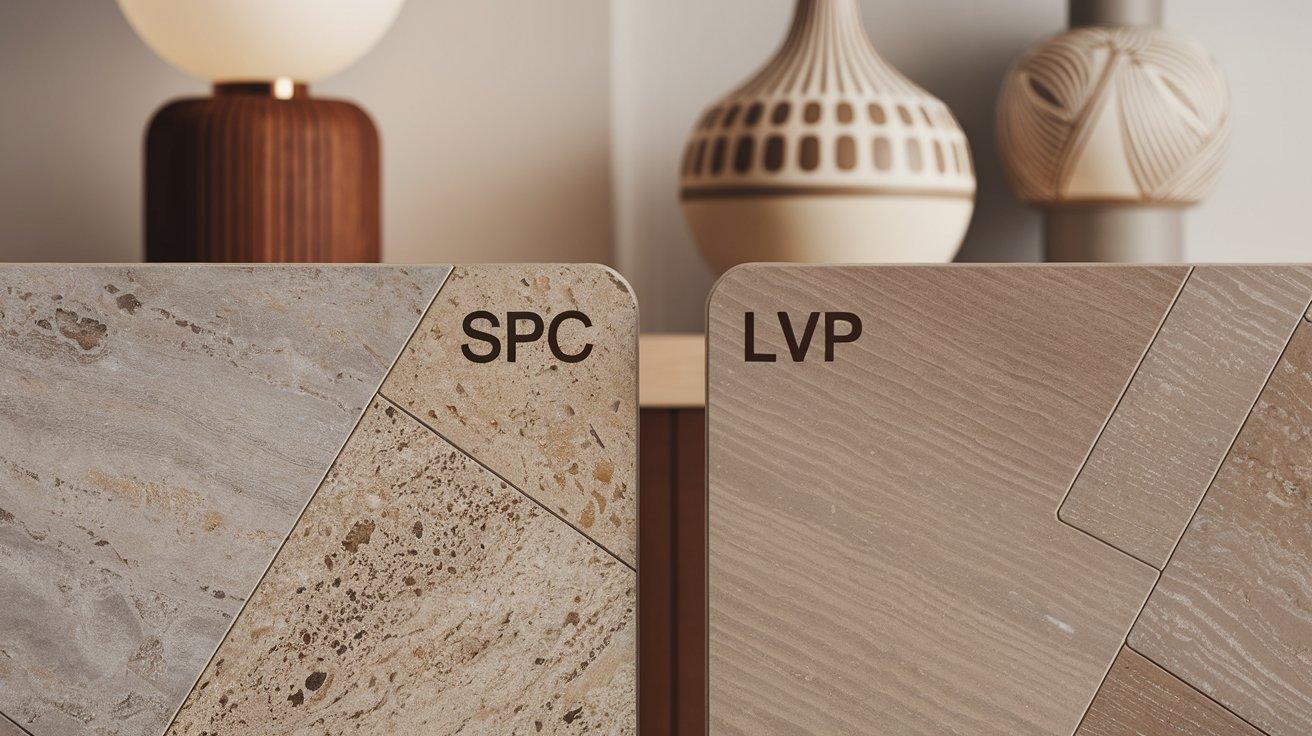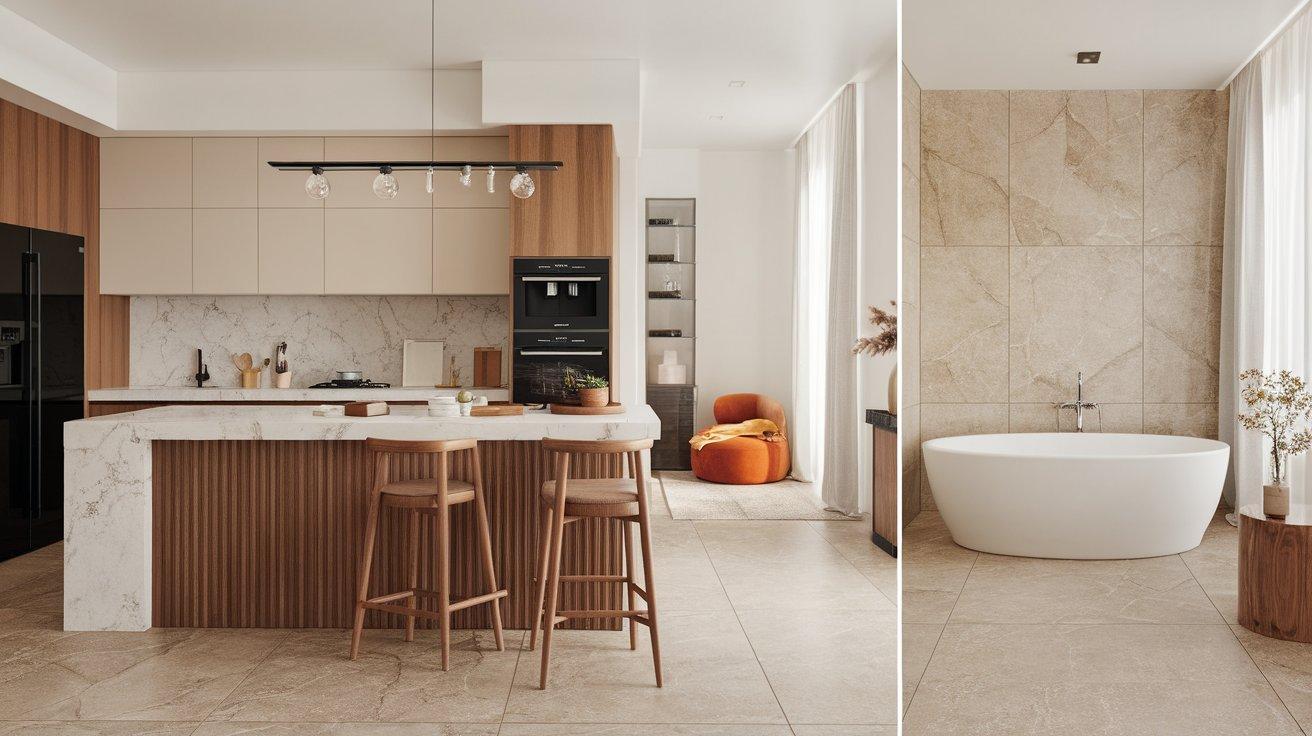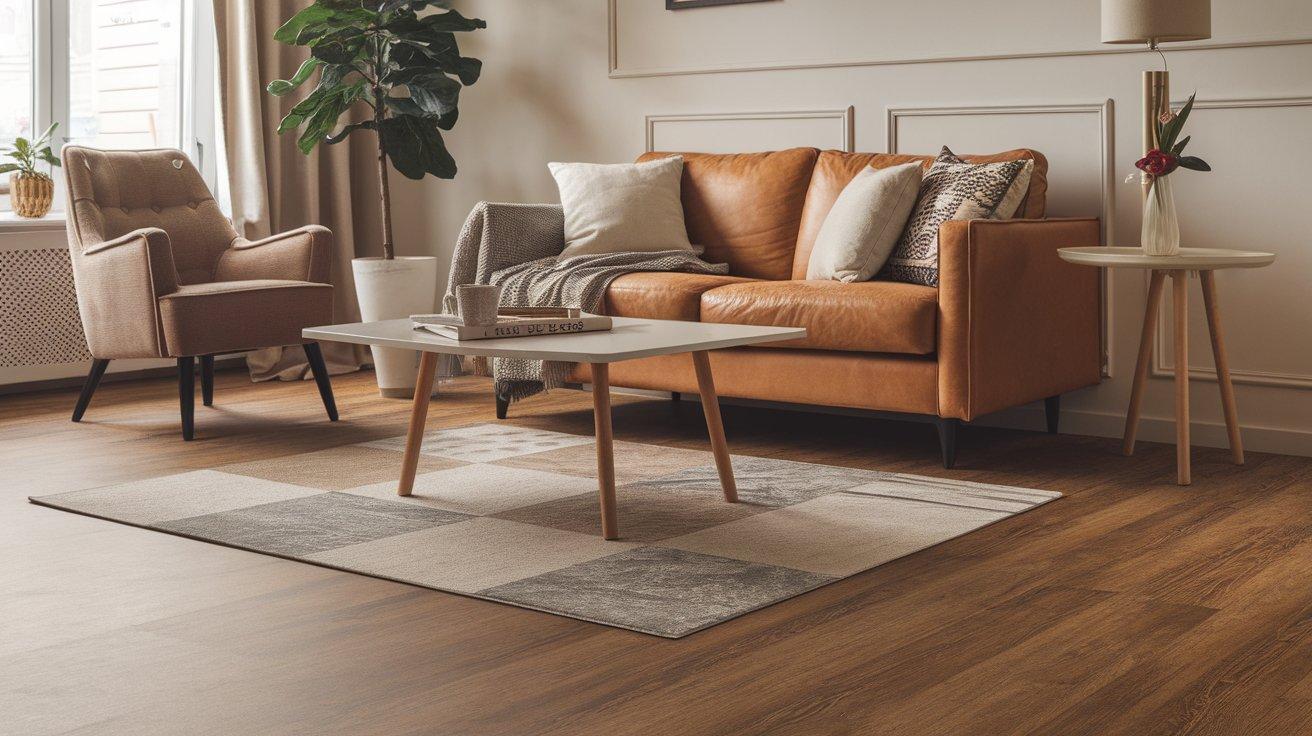Are you torn between SPC and LVP flooring for your home? With so many flooring options available today, this choice can feel overwhelming.
I know how frustrating it can be to spend hours researching flooring materials only to end up more confused than when you started. The right floor needs to match your lifestyle, budget, and personal taste.
Good news! This blog will help you understand the key differences between SPC and LVP flooring. I’ll explain what each material is made of, its main benefits and drawbacks, and which situations call for one over the other.
Let’s look at what makes these popular flooring options different so you can make the best choice for your home.
What are SPC and LVP?
Both SPC and LVP are modern flooring solutions that have gained popularity in recent years. They offer practical alternatives to traditional hardwood, tile, or laminate floors.
SPC stands for Stone Plastic Composite – a rigid core vinyl flooring that contains limestone and stabilizers for added strength. LVP, or Luxury Vinyl Plank, is a more flexible vinyl flooring that mimics the look of hardwood planks.
While they may look similar at first glance, these materials have notable differences in structure, performance, and ideal uses. Let’s examine each type in detail to help you make an informed decision.
Understanding SPC (Stone Plastic Composite) Flooring
SPC flooring features a rigid core made from limestone powder mixed with PVC. This multi-layer system includes a protective wear layer, decorative film, stone-plastic composite core, and often an attached underlayment.
| Pros of SPC Flooring | Cons of SPC Flooring |
|---|---|
| Waterproof – Can handle spills, splashes, and high humidity | Harder feel – Less comfortable for long periods of standing |
| Temperature stable – Minimal expansion or contraction | Cooler to touch – The stone content makes it feel colder |
| Dent-resistant – Holds up well under heavy furniture | Less sound absorption – Can be noisier without good underlayment |
| Works with underfloor heating – Compatible with radiant systems | More expensive – Typically costs more than standard LVP |
| Hides subfloor imperfections – Can be installed over slightly uneven surfaces | Fewer design options – May not have as many style choices as LVP |
| Longer lifespan – Often lasts 15-20+ years | Less DIY friendly – It may be harder to cut and install for beginners |
Understanding LVP (Luxury Vinyl Plank) Flooring
LVP flooring is a flexible vinyl product that realistically mimics natural wood. Its construction includes a wear layer, printed design film, vinyl core, and sometimes an attached cushioning underlayment.
| Pros of LVP Flooring | Cons of LVP Flooring |
|---|---|
| Comfortable underfoot – Flexible core provides better cushioning | Less stable – May expand or contract with temperature changes |
| Warmer feel – Doesn’t contain stone, so it feels less cold | Shows subfloor issues – Requires more careful subfloor preparation |
| Budget-friendly – Generally less expensive than SPC | More vulnerable to dents – Heavy furniture can leave impressions |
| Rich, realistic designs – Many high-quality patterns available | Less waterproof – Not ideal for flood-prone areas |
| Better sound reduction – Quieter when walked upon | Shorter lifespan – Typically lasts 10-15+ years |
| Easier DIY installation – Flexible material is easier to cut and maneuver | Environmental concerns – Made primarily from non-biodegradable PVC |
Comparing SPC and LVP: Key Differences

This comparison table highlights the essential differences to help you choose between these flooring options:
| Feature | SPC (Stone Plastic Composite) | LVP (Luxury Vinyl Plank) |
|---|---|---|
| Core Structure | Rigid, stone-plastic composite | Flexible, vinyl |
| Thickness | 3–9.5 mm typical | 2–8 mm typical |
| Feel Underfoot | Firm, solid | Softer, more cushioned |
| Temperature Feel | Cooler | Warmer |
| Subfloor Requirements | More forgiving of imperfections | Requires a smooth, even surface |
| Typical Price Range | $3–7 per sq ft | $2–5 per sq ft |
| Lifespan | 15–20+ years | 10–15+ years |
Which One Should You Choose?
Factors to Consider Before Making a Decision
When selecting between SPC and LVP, think about:
1. Installation location: The room where you’ll install the flooring matters. For areas prone to moisture or temperature changes, SPC typically performs better.
2. Subfloor condition: If your subfloor has minor imperfections, SPC’s rigid structure may hide them better than flexible LVP.
3. Comfort preferences: Do you prefer a softer feel underfoot or a more solid surface? LVP offers more cushioning, while SPC provides firmer support.
4. Budget limitations: While prices vary by brand and quality, LVP generally costs less than SPC. Consider both initial costs and long-term value.
5. Durability needs: For homes with active kids, pets, or heavy furniture, SPC’s better dent resistance may be worth the extra cost.
Best Use Cases for SPC and LVP
SPC works best in:
- Bathrooms, kitchens, and basements
- Homes in regions with significant temperature swings
- Areas with heavy furniture or high traffic
- Homes with underfloor heating systems
- Spaces where maximum water protection is needed
LVP works best in:
- Bedrooms and living rooms
- Areas where standing comfort is important
- Budget-conscious renovations
- Homes in moderate climates
- Spaces where noise reduction is valued
Other Considerations When Choosing Between SPC and LVP
Installation Method: Both SPC and LVP come in click-lock or glue-down options. Click-lock tends to be easier for DIY installation, while glue-down provides better stability in large spaces.
Thickness Variations: Within both categories, thickness varies. Thicker products often last longer and feel more substantial underfoot. For SPC, look for at least 5mm. For flooring LVP, 4-5mm is a good standard.
Wear Layer Protection: The wear layer thickness (measured in mil) determines how well the floor resists scratches and stains. For busy households, look for at least 12-20 mil for either type.
Plank Size Options: Wider and longer planks create fewer seams and a more spacious look, but may cost more. Both SPC and LVP come in various plank dimensions.
Environmental Impact
Both SPC and LVP are made with PVC, which has environmental drawbacks. However, manufacturers are making progress:
- Some brands now offer phthalate-free options
- Look for Floor Score or Green Guard certification for indoor air quality
- Check if the manufacturer has recycling programs
- Some companies use recycled content in their products
SPC often contains more natural materials (limestone) than standard LVP, but this doesn’t necessarily make it more eco-friendly overall.
Maintenance Requirements
Both flooring types offer easy care routines:
- Regular sweeping or vacuuming (with a hard floor setting)
- Occasional mopping with a damp mop and mild cleaner
- Prompt cleanup of spills
- Use of furniture pads to prevent scratches
SPC can handle slightly more aggressive cleaning due to its harder wear layer, while LVP may require gentler care to maintain its appearance long-term.
Understanding LVT, LVP, EVP, and WPC Flooring Options
When you LVP compare with other luxury vinyl options, it helps to understand the full range available. LVT (Luxury Vinyl Tile) is similar to LVP but comes in tile shapes rather than planks. The main difference between LVT LVP is simply the shape and style they mimic.
EVP flooring (Engineered Vinyl Plank) represents another variation with an enhanced rigid core. When looking at LVP EVP differences, EVP typically offers better stability than standard LVP while maintaining some flexibility. WPC (Wood Plastic Composite) provides yet another option, using wood flour in its core for a different feel.
Each type serves specific needs. The SPC core provides maximum durability, while SPC vinyl combines the benefits of stone composite with vinyl’s versatility. An SPC floor works exceptionally well in commercial settings or high-moisture areas. In one word, these modern flooring solutions offer impressive durability and style options for any space.
Conclusion
Choosing between SPC and LVP flooring comes down to your specific needs and priorities. Both options offer good value and practical benefits compared to traditional flooring materials.
SPC stands out for its water resistance, stability, and durability. It works well in challenging spaces like bathrooms and basements. The rigid core handles heavy furniture better and resists temperature changes.
LVP offers more comfort, warmth, and often a lower price point. It feels softer underfoot and typically creates less noise when walked on. Many homeowners prefer it for bedrooms and living spaces.
Consider each room’s specific needs when making your choice. You might even use different types in different areas of your home for the best results.
Frequently Asked Questions
Can I Install SPC or LVP Flooring in My Basement?
Yes, both work in basements, but SPC is better for potential moisture issues. Its waterproof core handles humidity changes better than standard LVP.
Do I Need to Hire a Professional to Install SPC or LVP Flooring?
Both have DIY-friendly click-lock options. LVP is easier to cut and maneuver, while SPC installation may require more specialized tools and experience.
How Long Do I Need to Wait Before Walking on Newly Installed SPC or LVP Floors?
You can walk on both click-lock installations immediately. For glue-down methods, follow manufacturer guidelines—typically 24-48 hours before regular foot traffic.




